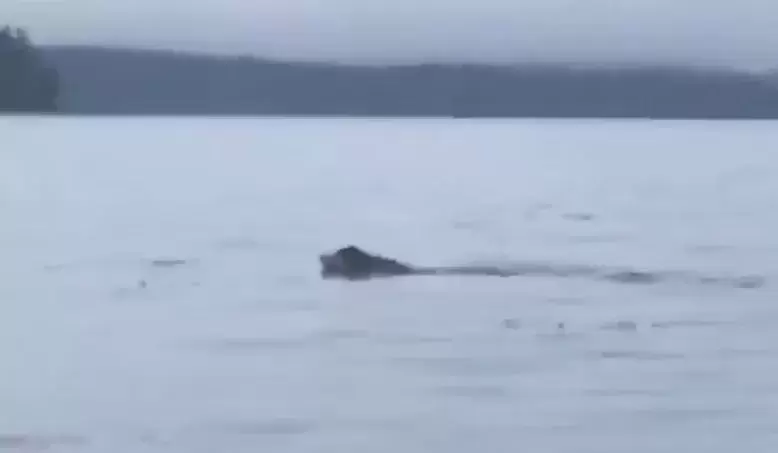At the end of a four-day shift, Tseshaht beachkeepers Hank Gus and Aaron Watts were on their way home from the Broken Group Islands on the morning of Friday, Sept. 7, when they saw something they’ve never encountered over their time in the Barkley Sound sites.
“I was just looking out for any logs that might be in the way,” said Gus. “There was something in the water: it wasn’t a log, it was a wolf.”
The pair took a cell phone video of the wolf from their boat, occasionally shouting “Q#ayaac`iiq! Q#ayaac`iiq!” in encouragement, which means wolf in Nuu-chah-nulth. The footage posted online shows the animal quickly paddling across the open water, appearing to be travelling from an island in the area to Dempster Island. Once on Dempster’s rocky shore, the wolf quickly shook off the remnants of the ocean to disappear in the bush.
After being absent since the 1960s, in the 1990s wolves began to recolonize the west coast of Vancouver Island, according to Parks Canada. This was the first wolf Gus had seen in the Broken Group in a few years, and the first time he witnessed one swimming across the ocean water. The last reported sighting in the area came from a visitor to the Broken Group in September 2017, said the Tseshaht beachkeeper.
“We made a report to the wildlife officer in Parks Canada,” said Gus of the recent sighting. “We don’t have that many wolf encounters in the Broken Group, but we do tell people there is a small population out there. It’s rare to see them.”
Two pairs of Tseshaht beachkeepers oversee the Broken Group over the summer, alternating stays in a cabin on Keith Island each three or four days. The Islands are within the Pacific Rim National Park Reserve, and through a partnership with Parks Canada, the beachkeepers check for camping permits, lead visitors through safety orientations as well as providing wildlife and weather updates for the tourist destination.
“We’re used to seeing over 100 people out there each week,” said Gus. “Now it’s starting to slow down, this week we’ve only seen about 35-40 people.”
As the popular attraction is part of the Tseshaht’s ancestral territory, the beachkeepers also ensure the sacred sites are protected.
“We look after all the old village sites, because we want to protect them still,” said Gus. “We just make sure people don’t go where they’re not supposed to, and then we also interpret local history with our guests out there. We share a little bit of Tseshaht with them.”







